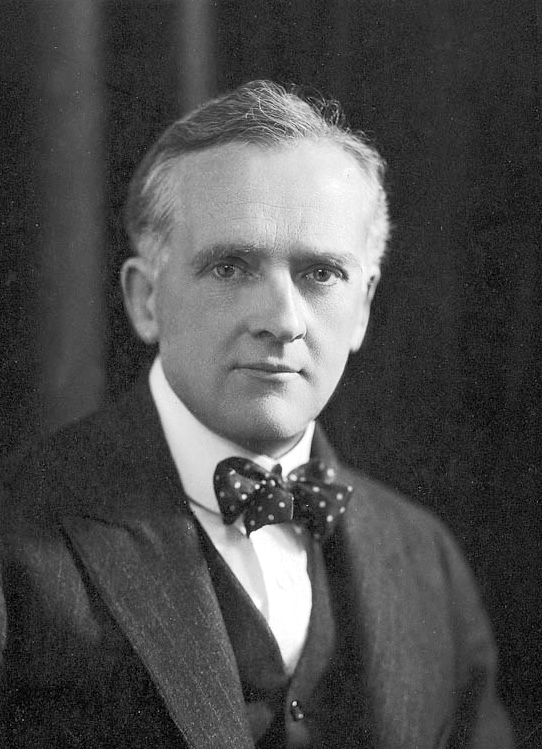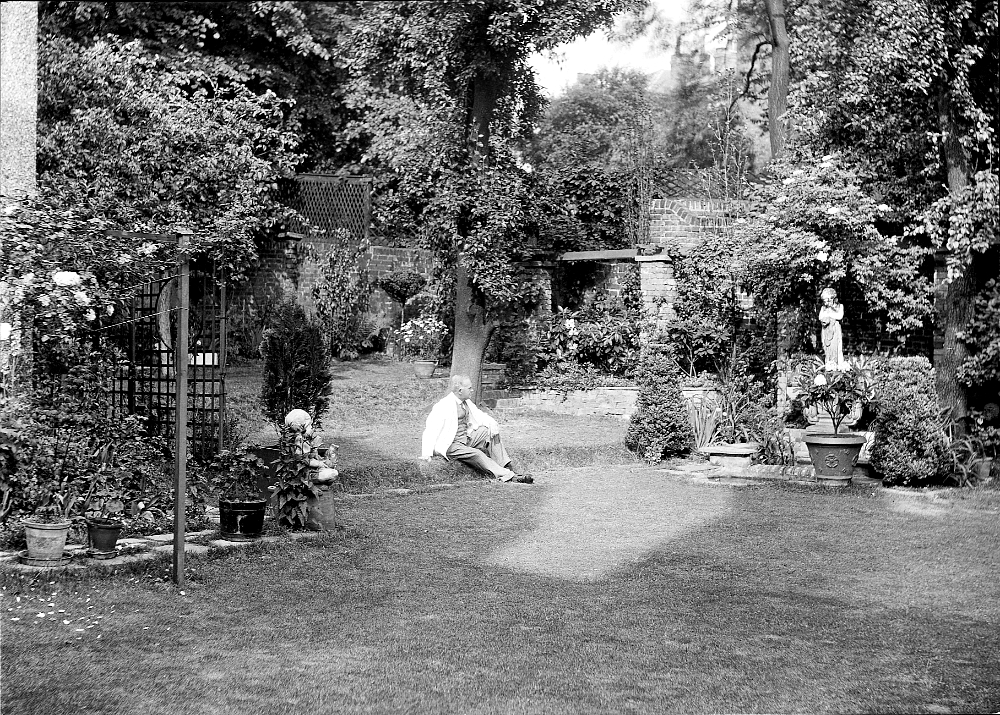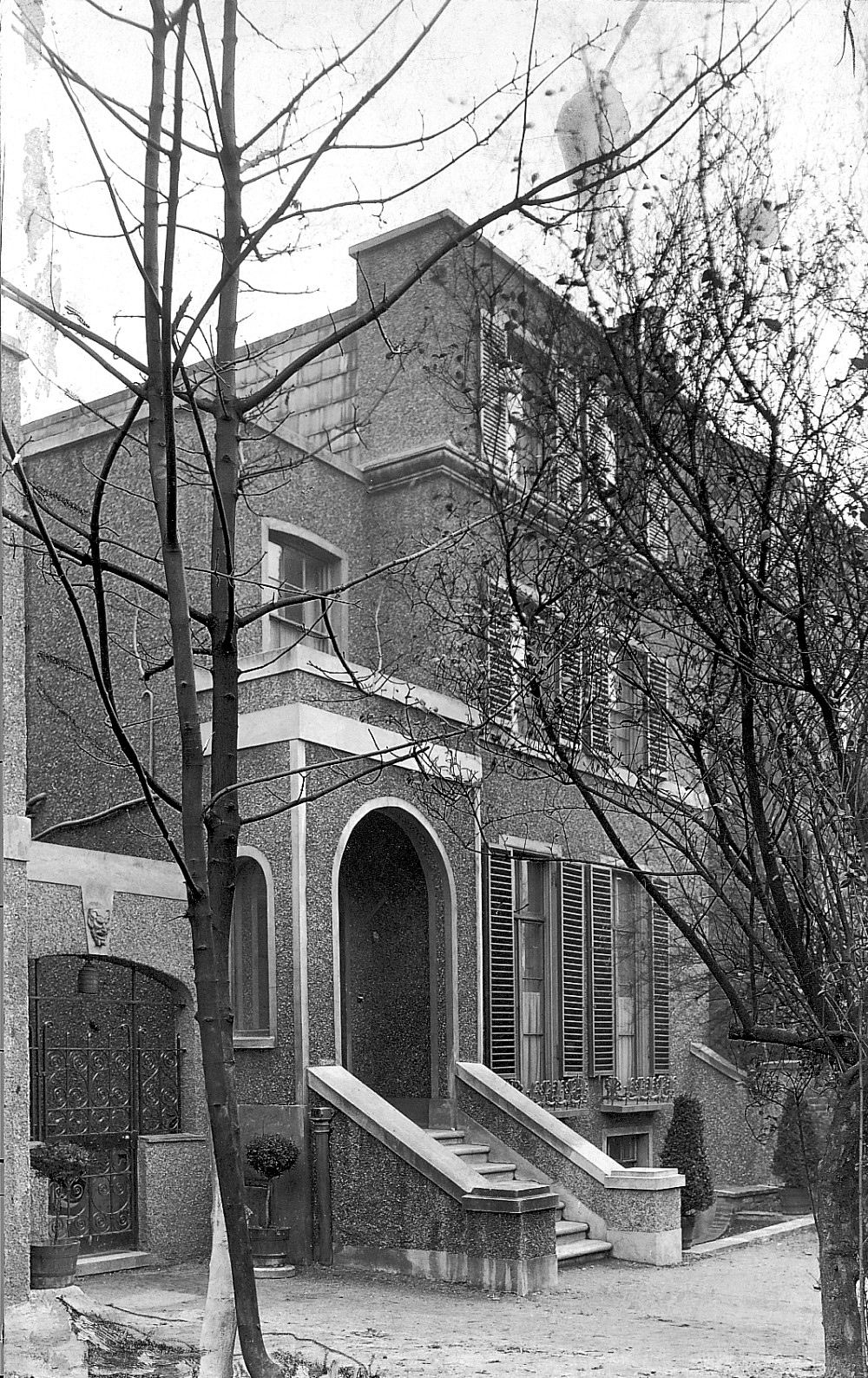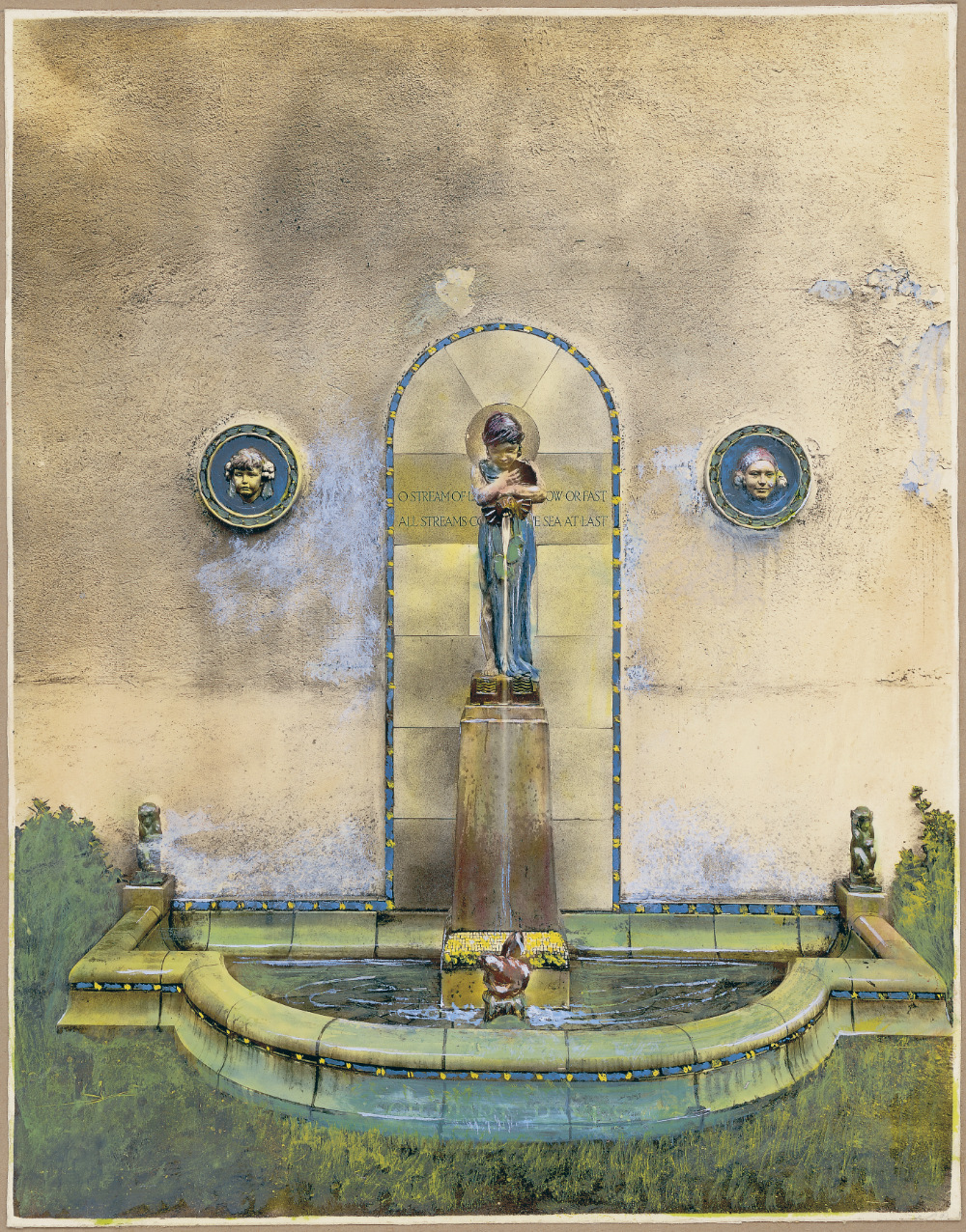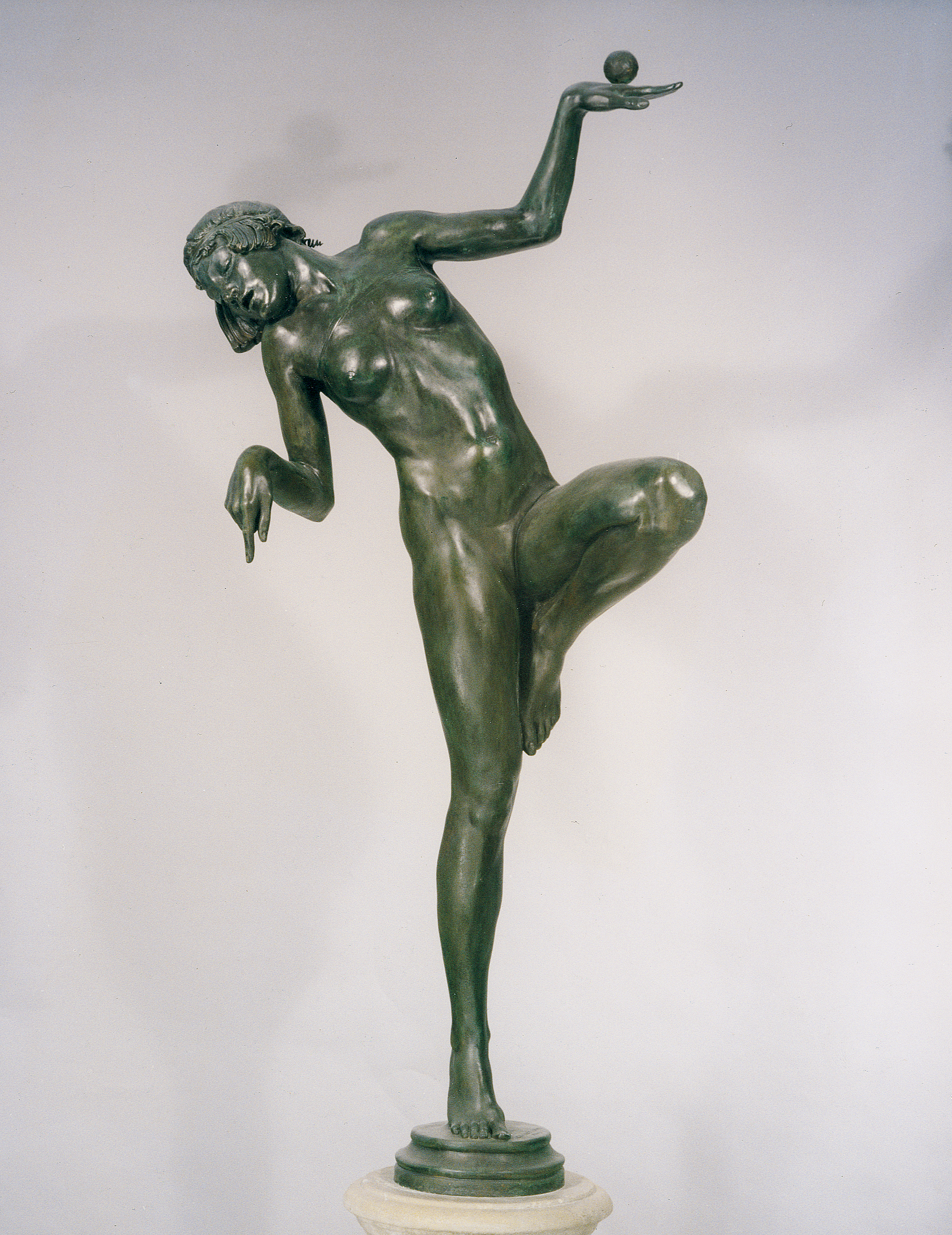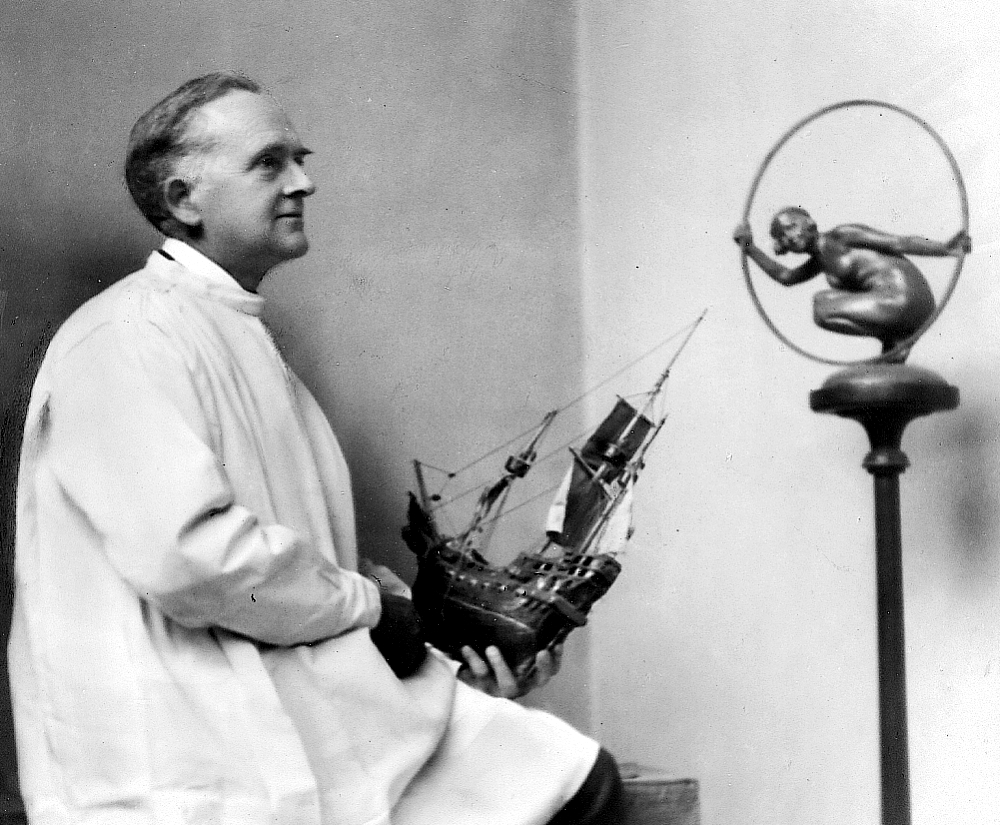Gilbert Bayes Life
Gilbert Bayes was born in North London on 4 April 1872, the second son of a professional artist Alfred Walter Bayes and Emily Ann Fielden. He was interested in sculpture from an early age and made his debut at the Royal Academy of Arts with two wax models when he was 17 years old in 1889. For the next 55 years, he was a regular exhibitor at the annual Royal Academy shows.
During the 1890s, Gilbert studied at the City & Guilds School in Finsbury and the Royal Academy Schools where he was influenced particularly by the sculptor George Frampton who became a life-long friend. Gilbert won the Armitage prize, the Landseer Scholarship, silver and gold medals, and a £200 travelling scholarship which enabled him to study in Italy and France for a year. An early bronze relief received an honourable mention at the Paris Universal Exposition in 1900.
In 1906, Gilbert married fellow student, Gertrude Smith, and they set up home at 40 Boundary Road in St. John’s Wood where their children Jean and Geoffrey were born. His equestrian statue of Sigurd attracted considerable interest when it was first shown at the Royal Academy in 1909 and a version was acquired by the Chantrey Bequest for the Tate Gallery. It was later acclaimed by Herbert Maryon in his book Modern Sculpture 1933 as “unsurpassed by any other equestrian group in existence.”
Gilbert’s commission to design the Great Seal for King George V in 1911 brought official recognition and it was followed by his commission for two equestrian statues for the Australian War Memorial in Sydney which exempted him from military service during the First World War. In the years following the war, Gilbert worked on several war memorials for British towns as well as the National War Memorial in Newfoundland, Canada.
